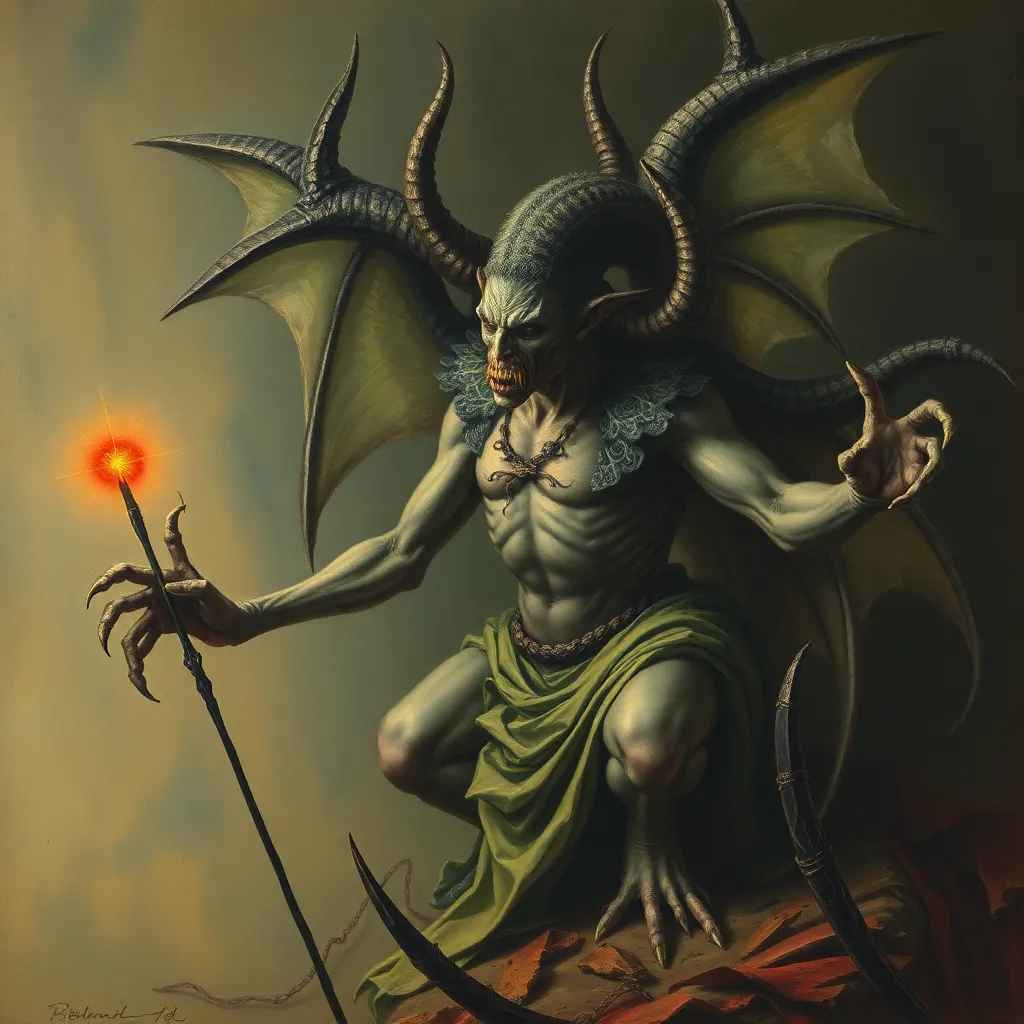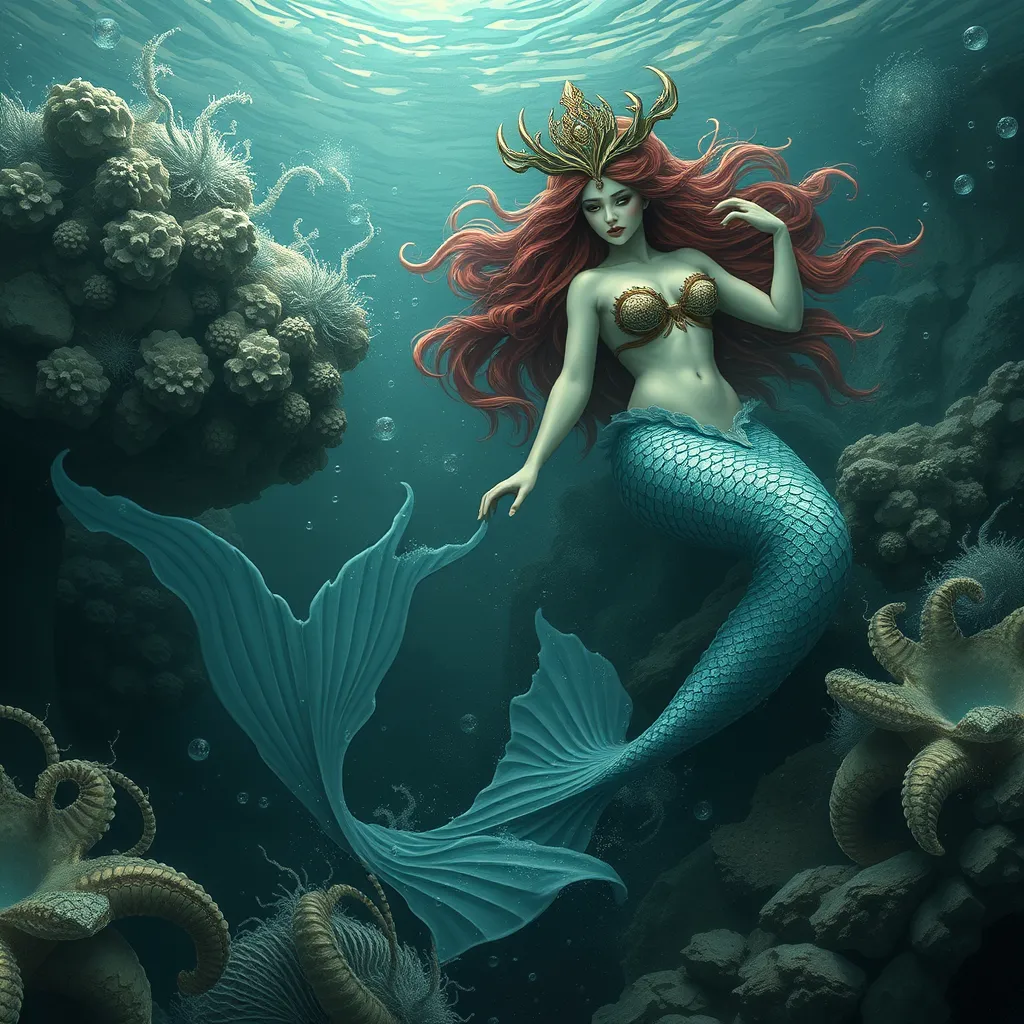Empusa on Canvas: Investigating the Demon’s Depiction in Painting and Visual Arts
I. Introduction
Empusa is a fascinating figure in ancient Greek mythology, often depicted as a seductive demon with the ability to shape-shift. As a daughter of Hecate, she embodies both allure and terror, drawing in unsuspecting victims before revealing her true nature. This duality makes Empusa a compelling subject in the visual arts.
The importance of visual representation in understanding mythological figures cannot be overstated. Art serves as a bridge between the past and present, allowing us to interpret and reinterpret ancient narratives through various lenses. In this article, we will explore how Empusa has been depicted in painting and visual arts across different historical contexts.
II. Historical Context of Empusa
The origins of Empusa can be traced back to ancient Greek mythology, where she was often associated with the night and supernatural occurrences. Her character is mentioned in works by notable authors such as Homer and later writers like Apuleius, where she plays a role in the fears and fantasies of the ancient world.
Empusa’s role in folklore and literature highlights her significance as a figure that embodies the fears of the unknown. Over the ages, her image has evolved, shifting from a fearsome demon to a more complex character that reflects societal anxieties and desires.
III. Empusa in Classical Art
In classical art, Empusa is often represented subtly, reflecting the norms of the time. Ancient Greek pottery and sculptures provide valuable insights into her portrayal. For instance, many vases depict scenes from mythology, including those involving Empusa, often emphasizing her seductive nature.
- Examination of Ancient Greek Pottery: Various amphorae and kylixes illustrate scenes where Empusa interacts with mortals, showcasing her alluring yet dangerous characteristics.
- Sculptures: Statues from the Hellenistic period sometimes depict figures representing Empusa’s duality, capturing both beauty and horror.
Notable works, such as the “Panathenaic amphora,” provide a glimpse into how artists interpreted mythological themes and the significance of Empusa within them.
IV. The Renaissance and Baroque Interpretations
The Renaissance marked a significant shift in the portrayal of demons in European art. Artists began to explore deeper psychological themes and the complexities of human emotions. Empusa’s influence can be seen in works that emphasize the struggle between desire and danger.
Key artworks from this period include:
- The Temptation of St. Anthony by Salvador Dalí: This piece reflects Empusa’s seductive nature through surreal imagery that challenges the viewer’s perception of reality.
- The Last Judgment by Michelangelo: Although not directly depicting Empusa, the representation of demons and the damned resonates with her essence, showcasing the fear of the supernatural.
These artworks contextualize Empusa within the broader themes of temptation and moral conflict, illustrating her enduring influence on artists during the Renaissance and Baroque periods.
V. Modern and Contemporary Representations
In modern art, movements such as Surrealism and Expressionism reinterpret mythological figures like Empusa, emphasizing subjective experience and inner turmoil. Contemporary artists draw upon her legacy to explore themes of identity, sexuality, and transformation.
Examples of modern representations include:
- Frida Kahlo: Her works often embody duality and personal struggle, echoing Empusa’s themes of pain and desire.
- Yayoi Kusama: Through her immersive installations, Kusama explores the psychological aspects of fear and obsession, akin to Empusa’s ability to captivate and ensnare.
These case studies illustrate how Empusa’s presence persists in contemporary visual arts, reflecting ongoing dialogues about myth and identity.
VI. Symbolism and Themes in Empusa’s Depictions
Common motifs associated with Empusa in visual arts include:
- Transformation: Often depicted in a state of flux, representing the dual nature of humanity.
- Allure and Danger: Her seductive form lures individuals while simultaneously threatening their safety.
- Shadow and Light: Many artworks explore the contrast between her enchanting beauty and the lurking terror she represents.
The psychological and cultural interpretations of Empusa highlight her as a symbol of fear, desire, and transformation. She embodies the complexities of human emotion, reflecting our deepest anxieties and aspirations.
VII. Comparative Analysis: Empusa vs. Other Mythological Demons
To understand Empusa’s unique place in mythology, it is essential to compare her to other similar figures, such as Lilith and Lamia. Each of these demons serves specific functions within their respective cultures:
- Lilith: Often viewed as a figure of female empowerment and independence, she contrasts with Empusa’s more predatory nature.
- Lamia: Like Empusa, Lamia is a demon associated with seduction and danger, but her narrative often revolves around maternal themes.
A comparative visual analysis reveals how cultural contexts shape the portrayal of these figures, emphasizing the unique aspects of Empusa’s character. While all embody fear, Empusa’s allure and transformative qualities set her apart.
VIII. Conclusion
In summary, the exploration of Empusa’s depiction in visual arts reveals a rich tapestry of interpretations that span centuries. From her origins in ancient Greek mythology to her modern reinterpretations, Empusa serves as a powerful symbol of the human experience.
Studying mythological representations like Empusa’s remains relevant today, as they offer insights into cultural anxieties and desires. As we continue to explore the intersection of myth and art, future research could delve deeper into the psychological and social implications of such figures in contemporary society.



